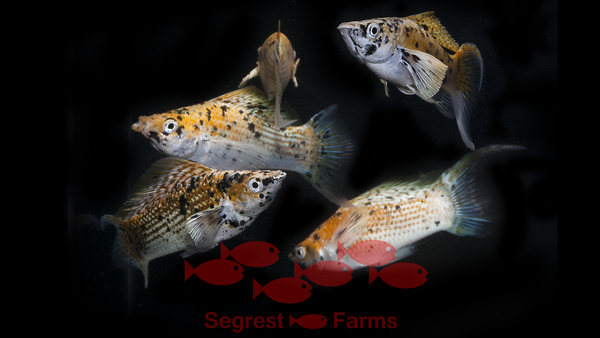
Aquariums can make fantastic additions to our lives. They can be fascinating and beautiful, and with care and planning can exemplify the intersection of art and life. Setting up a first aquarium is a time filled with excitement and anticipation. Unfortunately, a number of people will fall victim to poor planning or bad advice, have a terrible experience, and give up on the world of fish keeping forever. If you are just starting your first tank, or are trying to help guide someone else with their first tank, here are some common mistakes that can result in frustration or even complete failure.
Not doing proper research before beginning – Throughout all of pet keeping, this is perhaps the most widespread mistake, and one could easily argue that it is the root cause for every problem on this list. Very few fish are impossible to keep, but there are many fish that require specialized care. Before you buy anything, do as much research as you can to fully understand what is required for success. How large will the fish grow? The old belief that fish only grow to the size of their container is a myth, so you need to be able to provide adequate space throughout the fish's life. Are they schooling fish (like tetras) that need to be kept with a number of their own species or do they prefer being the only fish like themselves (like Rainbow Sharks)? Do they require any special water chemistry? What is their aggression level? What kind of food should they eat? Any pertinent question like this you should know the answer to before you buy the fish.
Starting with too small of an aquarium – There is a common assumption made that the smaller the aquarium the easier it will be to keep. After all, in almost every other aspect of life, the larger something is the more time and energy it takes to deal with it. In aquariums, the opposite is largely true. Larger aquariums are, for the most part, going to require less effort in order to keep healthy. The reason why this is true is because of dilution. The higher the volume of water, the more stable the water parameters will be and the less impact small changes will have. Smaller aquariums will require more frequent water changes in order to keep pollutants (such as what results from biological waste and uneaten food) down and will be more susceptible to swings in water chemistry (such as pH and water hardness) and temperature. As a bonus, larger tanks allow more fish, which ultimately increases your satisfaction with your aquarium. Very few people wish they had chosen a smaller aquarium, but almost all aquarists want larger ones.
Not understanding basic water chemistry – Another popular misconception among novices is that water is just water. This is practically never true. Virtually all water has other materials of some sort dissolved into it. Minerals, salts, gases, and organic matter are all potentially (actually probably) going to be found in any water you come into contact with. For aquarists, the first (and most vital) concept to learn and understand is how the Nitrogen Cycle works. In short, it is the process where organic matter (such as uneaten food, fish waste, dead and decaying plants or animals, etc.) is converted from Ammonia to Nitrite (both of which are toxic) and eventually to Nitrate. Failure to understand this process has killed many fish. Also important is to understand the basics of pH. On a scale of 0 to 14, 7.0 is neutral. Most tropical fish that are properly acclimated can survive in a relatively wide range of pH's stretching from about 6.0 (slightly acidic) to about 8.0 (slightly alkaline or basic), though certain fish need a more specific pH to survive. For example, many African Cichlids and Marine fish will need higher a higher pH in the 8.5 to 8.8 range. Research the fish you want to make sure you can provide the correct water chemistry for it.
Not properly preparing your water – This ties directly into understanding water chemistry. Every public water supply gets treated in some way to kill any microorganisms that may cause illness, but this treatment will also kill your fish. Some water treatment (such as chlorine) can be left to sit out for a few days and will dissipate from the water naturally, but others (like chloramines) need to be neutralized. Fortunately, there are a number of commercial dechlorinators that will neutralize both chlorine and chloramine for you and are very safe for aquarium inhabitants. Many people ask about buying water. Spring water is fine to use with fish, but quickly becomes quite expensive. Ultra purified waters such as Distilled, RO, and RO/DI water are safe for fish, but can make your tank prone to wild pH swings unless some sort of buffering agent is added back.
Adding too many fish at one time – If you have taken the time to learn the basics of the Nitrogen Cycle, it is likely that this has already been pointed out, but it is a concept that new aquarists might not be familiar with. The more fish you have (and the more you feed them), the more waste in the form of Ammonia is being produced. In a closed system such as an aquarium, this Ammonia (which is toxic to fish) will quickly build up to lethal levels. Fortunately, over time colonies of bacteria will develop that will detoxify this Ammonia, but it takes time to happen. There are a number of methods of "cycling" your tank to allow these colonies time to grow, but regardless of which method you choose, adding too many fish too quickly can often overwhelm your bacteria cultures, leading to deadly levels of ammonia accumulating.
With proper preparation, aquarium keeping can be a fun and rewarding hobby. Learning to avoid these common beginner mistakes will give you a head start and allow you to set yourself up for success.












#1 by Zenin Skomorowski on 1/28/17 - 12:03 AM